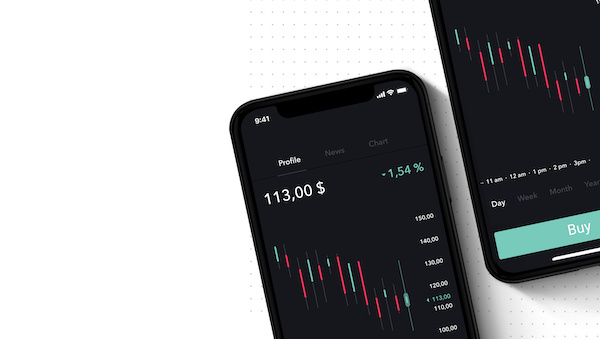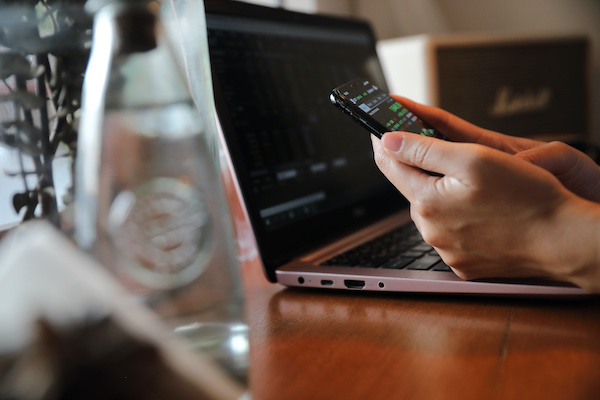
Over the past few years, Robinhood has completely changed the way stock brokerages work and has also opened up options trading to a new generation of investors.
By pioneering commission-free trading, Robinhood forced other online brokers to drop commissions. The easy-to-use Robinhood app also made trading fun and brought a new generation of traders to the stock market.
Along with stocks, ETFs, and options, Robinhood also offers trading in gold and cryptocurrency.
Of all these instruments, options are probably the hardest to master, yet they offer the greatest potential to boost your investment returns with limited risks. In this article, we’ll review options trading basics, the advantages and downsides of trading options on Robinhood, and a step-by-step explanation of how to trade options on Robinhood.
What Is Robinhood?
Launched in 2013, Robinhood is an online commission-free brokerage. Yes, Robinhood doesn’t charge any fees on any trades — even for options that used to be pretty expensive for retail traders.
Of course, Robinhood isn’t a charity, and they still need to make money and chase growth like any other tech company. Their meteoritic rise backfired when FINRA slapped Robinhood with a record $70 million fine for “misleading information to their customers” and unlocking risky instruments for users who weren’t ready for them. The brokerage also sold the order flow data of their customers to hedge funds for millions of dollars.
Whatever you think of this, the Robinhood app is undeniably user-friendly, even for complete beginners who are entering the market for the first time. And if you want to add options to your arsenal of investment strategies, Robinhood could be a great place to get the hang of this.
The Basics of Trading Options
While trading options on Robinhood is easy, it doesn’t mean you should jump straight into trading. It’s important to first understand what options are.
At the very least, you should know these terms:
- Call option: This is the type of option that gives you the right (but not an obligation) to buy the underlying security at a predetermined price.
- Put option: Similarly, this instrument gives you the right to sell shares.
- Expiration date: That’s the date by which you can exercise your option — buying or selling shares.
- Strike price: This is the stock price at which you can exercise your option.
- Premium: This is the price the options buyer pays to the options seller.
Before trading options, make sure you understand the theory of options trading and the risks.
If you’re buying options, your potential losses are limited to the option premium paid. And if you’re writing (i.e., selling) options, your potential losses are theoretically unlimited.
Now that we’ve got this brief disclaimer out of the way, let’s look at why you should consider trading options on Robinhood instead of Schwab, TD Ameritrade, or any other brokerage.
Advantages and Downsides of Trading Options on Robinhood

Robinhood’s trading app has several advantages over products from more old-school brokerages:
- Zero fees for options trading: Fees can really add up in the long run, and saving money on commissions is a great way to boost your returns.
- Several types of orders: You can choose between a Good-til-Canceled order (open for 90 days or until you cancel it) or a Good-for-Day order (automatically cancelled at the end of the trading day if it’s not executed). This should be just right for most beginners, balancing simplicity and flexibility.
- Fun mobile app: Robinhood did a great job of gamifying investment and turning investing from something boring into something fun.
At the same time, Robinhood’s simplicity also has its downsides:
- No advanced data: Experienced options traders rely on a lot of market data about pricing, orders, and volumes, yet the Robinhood mobile app keeps it very basic.
- No advanced charting: Similarly, the charts in the app aren’t as flexible as on some other trading platforms.
- The app might be encouraging risky trading: Investing is different from gambling. It’s about reaching your financial goals, and having fun isn’t the most important part. In fact, “boring” investments like long-term dividend stocks could often be the best choices.
Robinhood also takes some steps to make sure that users don’t treat trading like gambling. So to trade options, you’ll need to satisfy some requirements.
Trading Tiers on Robinhood

Like any other brokerage, Robinhood must ensure that options trading strategies are appropriate for each customer’s experience and financial situation. Before we dive into how to trade options on Robinhood, let’s review the requirements for different trading tiers.
To trade on Robinhood, you’ll need to fill out the profile in the app. The brokerage will use that information to assign you a designation of Level 1, Level 2, or Level 3. It’s best to be honest and share your true situation because otherwise you might end up taking more risk than you can handle.
To trade options, you’ll need a Level 2 designation, which gives you the basic options trading strategies:
- Long calls: Buying a call option for a stock or ETF
- Long puts: Buying a put option
- Covered calls: Selling a call option for a stock that you already own and which you’ll be forced to sell if the option is exercised
- Cash-covered puts: Selling a put option and keeping the cash to buy the shares of the underlying stock if the option is exercised
Level 3 also unlocks more advanced and potentially riskier options strategies:
- Iron condors: Buying and selling a combination of puts and calls with different strike prices and the same expiration date to profit from low price volatility in the underlying security
- Iron butterflies: Buying and selling a combination of four different options contracts to profit from the decline in the price volatility
- Credit spreads: Selling an option with a higher premium and simultaneously buying an option with a lower premium, hoping to profit if both options go unexercised and/or the spread between premiums narrows
While these strategies give even more flexibility, there is no easy way to get to Level 3, and so don’t try to game the system. As your account size and trading experience grow, Robinhood will automatically reevaluate your designation. Or, you could later simply switch to a different broker.
Additionally, FINRA, the brokerage regulator, requires all U.S. brokers to limit day trading, which it views as risky. So Robinhood only allows you to make three day trades within a five-day window. If you go over that limit, you’ll be labelled a “day trader” and will need to maintain a minimum balance of $25,000 in your brokerage account.
How to Trade Options on Robinhood in 7 Steps
Now you’ve got everything ready to trade your first options contract. Here’s what you’ll need to do:
- Open the search field by tapping on the magnifying glass in the upper right corner of the app.
- Enter the ticker for which you want to trade options.
- Tap on the ticker from the list.
- Tap “Trade.”
- Tap “Trade options.”
- Pick the contract with the strike price and expiration date you want.
- Enter a Good-til-Canceled order (open for 90 days or until you cancel it) or a Good-for-Day order (automatically cancelled at the end of the trading day if it’s not executed).
That’s it! You’ve placed your first order to trade options on Robinhood.
Jump-Start Your Options Trading
Trading options might seem complicated but it doesn’t have to be. Like any other financial market, options are filled with jargon and numbers that most beginners find intimidating. It’s easier to learn trading by practicing and taking small risks while picking up the theory along the way.





